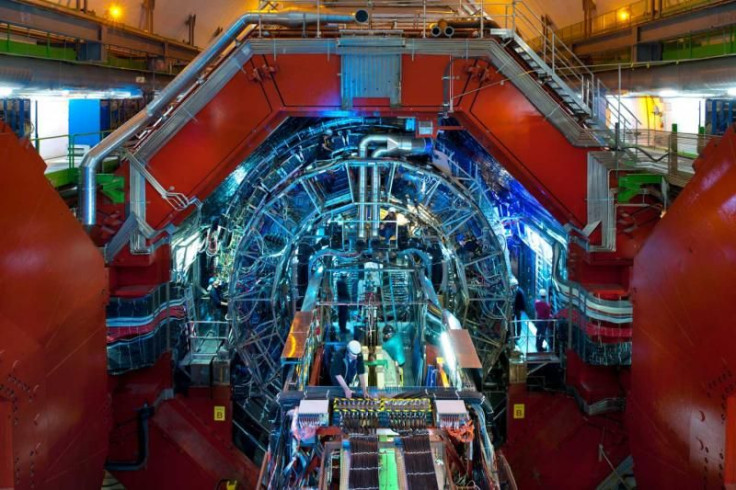CERN Update: Possible Quark-Gluon Plasma Signature Observed In Proton-Proton Collisions

The universe we live in and everything in it burst into existence roughly 13.8 billion years ago. In its infancy, the cosmos was filled with a dense primordial “soup” of quark-gluon plasma, which, as the name suggests, is a mixture of quarks — the fundamental particles that make up protons and neutrons — and gluons — the force carriers that bind quarks together.
While scientists have been successful in recreating this exotic soup during high-energy collisions between heavy ions of gold and lead — carried out in particle accelerators like the Relativistic Heavy Ion Collider and CERN’s Large Hadron Collider (LHC) — we still do not have a comprehensive understanding of the inner workings of this ephemeral plasma state.
Read: Simulation Sheds Light On Quark-Gluon Plasma Structure
Now, in a study published Monday in the journal Nature Physics, researchers associated with the ALICE experiment at LHC describe the creation of quark-gluon plasma in collisions between protons too. This phenomenon challenges existing theoretical models about how this primordial soup is created, and could provide key insights into its nature.
“We are very excited about this discovery,” Federico Antinori, a spokesman for the ALICE collaboration, said in a statement. “We are again learning a lot about this primordial state of matter. Being able to isolate the quark-gluon-plasma-like phenomena in a smaller and simpler system, such as the collision between two protons, opens up an entirely new dimension for the study of the properties of the fundamental state that our universe emerged from.”
In order to see if proton collisions during the LHC’s first run between 2009 and 2013 had created quark-gluon plasma, researcher associated with the ALICE collaboration looked for something called strange hadrons in collision debris. Strange hadrons, which contain at least one strange quark (one of the six known “flavors” of quarks), are produced in much greater numbers than non-strange ones in the presence of the high energy density of quark-gluon plasma.
To their surprise, the researchers found that this “enhanced strangeness production” was manifested even during proton collisions.

“In particular, the new results show that the production rate of these strange hadrons increases with the ‘multiplicity’ – the number of particles produced in a given collision – faster than that of other particles generated in the same collision,” CERN explained in the statement. “While the structure of the proton does not include strange quarks, data also show that the higher the number of strange quarks contained in the induced hadron, the stronger is the increase of its production rate.”
Although this observation is definitely intriguing, it does not conclusively prove that proton collisions do lead to the creation of quark-gluon plasma. The enhanced production of strange hadrons could very well be due to some hitherto unknown subatomic phenomenon.
“This measurement is of great interest to quark-gluon-plasma researchers who wonder how a possible QGP signature can arise in proton-proton collisions,” Urs Wiedemann, a theorist at CERN, told Symmetry magazine. “But it is also of great interest for high energy physicists who have never encountered such a phenomenon in proton-proton collisions.”
© Copyright IBTimes 2025. All rights reserved.





















